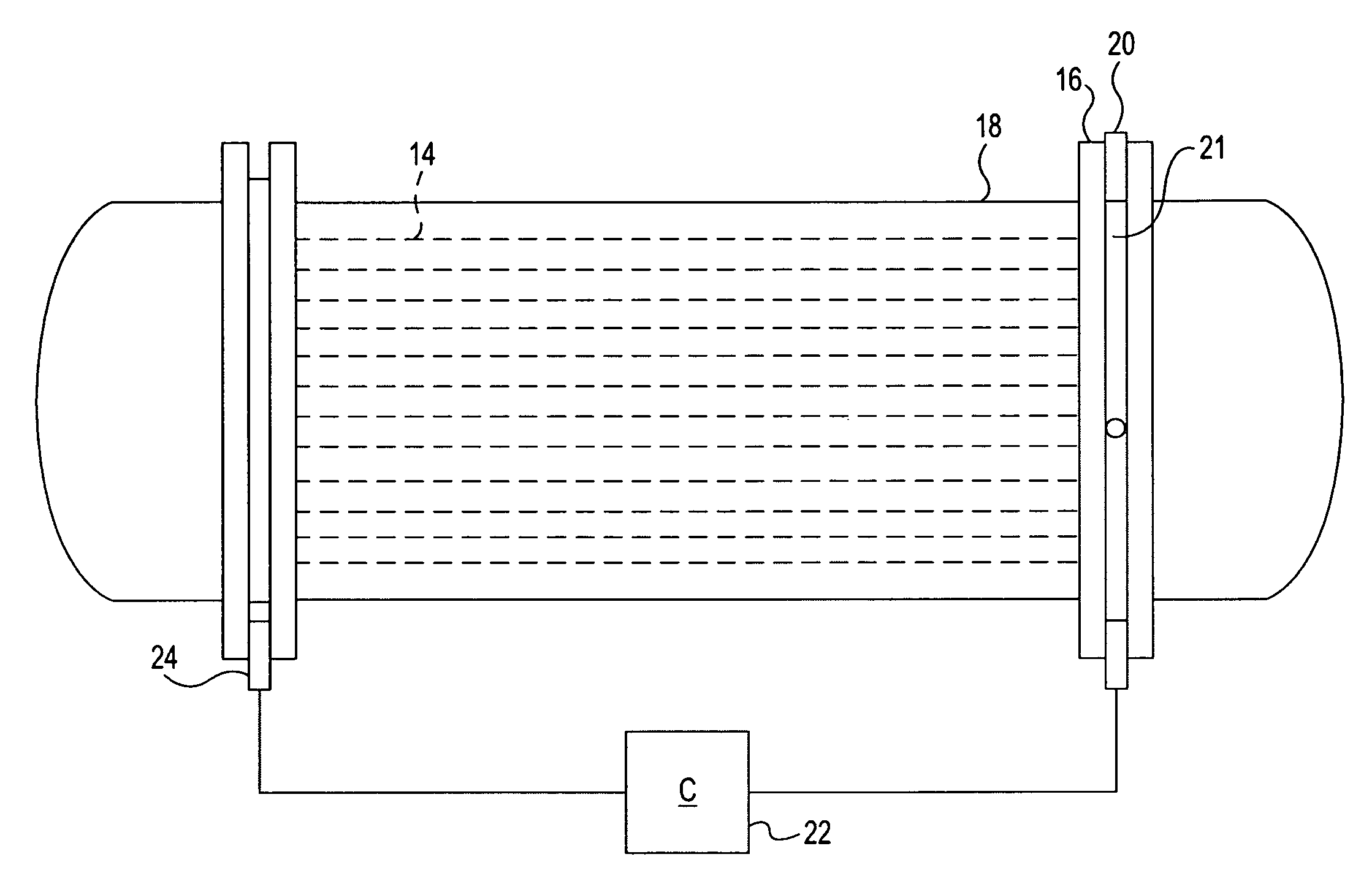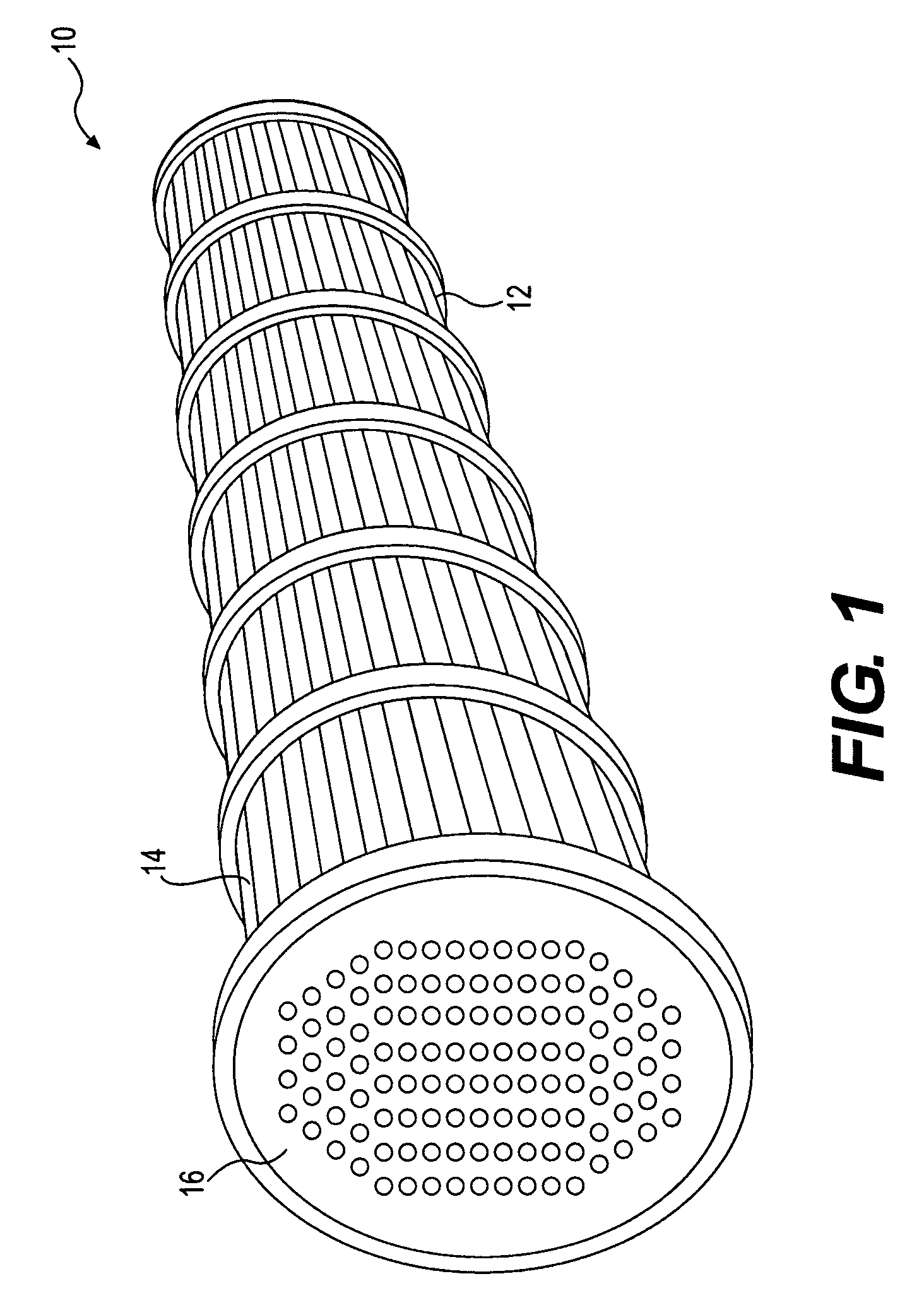Mitigation of in-tube fouling in heat exchangers using controlled mechanical vibration
a technology of mechanical vibration and heat exchanger, which is applied in the direction of indirect heat exchangers, heat exchangers in moving conduits, lighting and heating apparatus, etc. it can solve the problems of reducing the effectiveness of heat exchangers, affecting equipment operation, and low thermal conductivity of fouling layers, so as to reduce the fouling of tubes
- Summary
- Abstract
- Description
- Claims
- Application Information
AI Technical Summary
Benefits of technology
Problems solved by technology
Method used
Image
Examples
Embodiment Construction
[0032]This invention is directed to a method of mitigating fouling in heat exchangers, in general, and the devices for practicing the method. In a preferred use, the method and devices are applied to heat exchangers used in refining processes, such as in refineries or petrochemical processing plants. The invention is particularly suited for retrofitting existing plants so that the process may be used in existing heat exchangers, especially while the heat exchanger is on line and in use. Of course, it is possible to apply the invention to other processing facilities and heat exchangers, particularly those that are susceptible to fouling in a similar manner as experienced during refining processes and are inconvenient to take off line for repair and cleaning.
[0033]While this invention can be used in existing systems, it is also possible to initially manufacture a heat exchanger with the vibration inducing devices described herein and use the method in accordance with this invention in...
PUM
 Login to View More
Login to View More Abstract
Description
Claims
Application Information
 Login to View More
Login to View More - R&D
- Intellectual Property
- Life Sciences
- Materials
- Tech Scout
- Unparalleled Data Quality
- Higher Quality Content
- 60% Fewer Hallucinations
Browse by: Latest US Patents, China's latest patents, Technical Efficacy Thesaurus, Application Domain, Technology Topic, Popular Technical Reports.
© 2025 PatSnap. All rights reserved.Legal|Privacy policy|Modern Slavery Act Transparency Statement|Sitemap|About US| Contact US: help@patsnap.com



